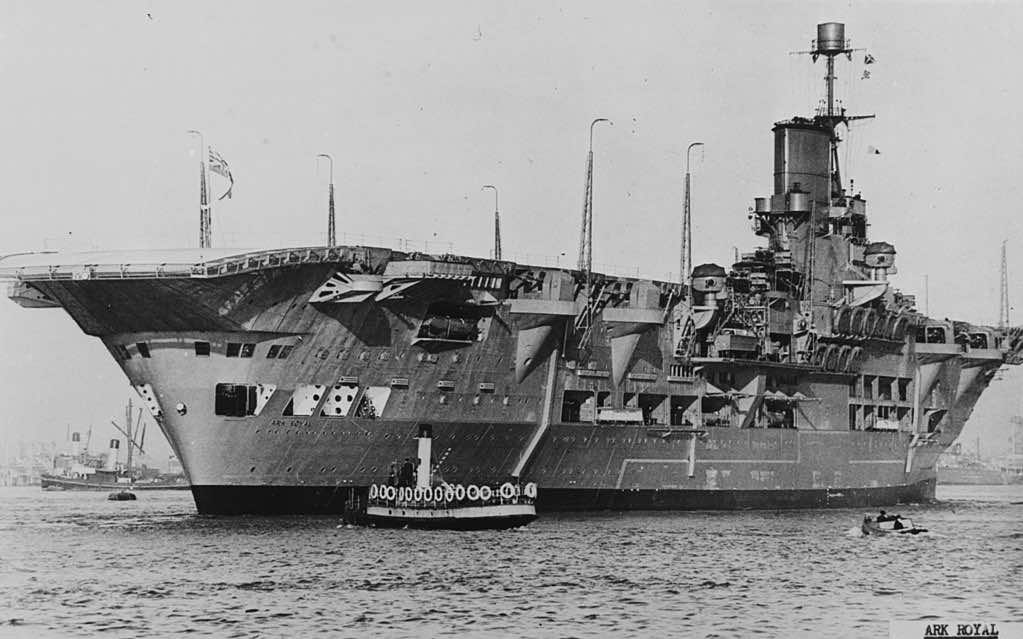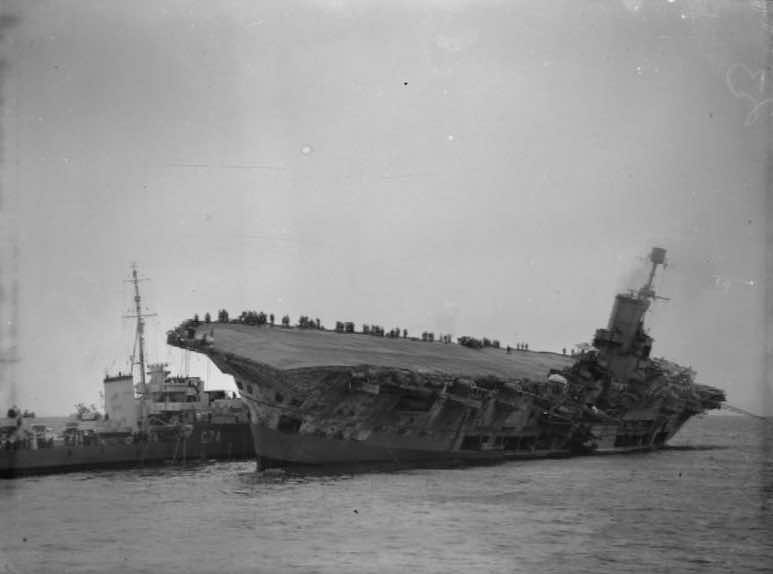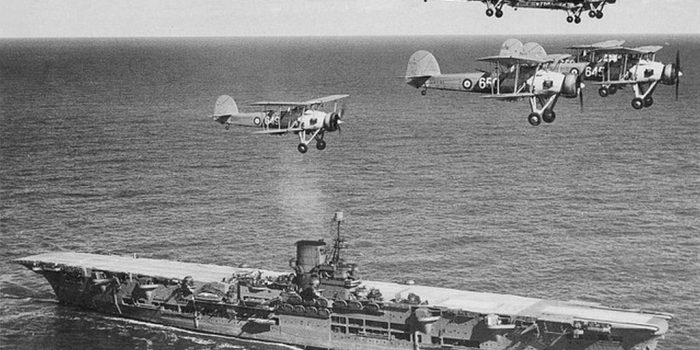HMS Ark Royal (1937-1941) was the first purpose built large aircraft carrier to be completed for the Royal Navy, and one of the most famous warships of the Second World War. Part of her fame came from repeated German claims to have sunk her, but she also took part in the campaign off Norway, the hunt for the Bismarck and the first two years of the war in the Mediterranean, before finally being sunk by U-81.
The Ark Royal followed a series of large carriers that had been converted from battlecruisers, and its design reflected the experience gained on those ships. Structurally the main change was that the flight deck was an integral part of the hull, a role that had previously been played by the existing main deck of the converted ships. This made her more rigid than her predecessors. The flight deck itself was 720ft long and 95ft wide, with a squared off bow and a very long overhanging stern. The flight deck was 56ft above the deep load waterline (compared to 38ft on the Illustrious class). This could be important when an aircraft was struggling to take off, dipping below the level of the flight deck before beginning to climb. The Ark Royal had two catapults, each capable of launching a 12,000lb aircraft at 66kts, and a series of arrestor cables. The island and funnel were carried on the starboard.

The Ark Royal could operate sixty aircraft, although she rarely carried a full complement. This was much better than the next generation of Royal Navy carriers, where weight was taken up by the armoured hangers and decks, but still not as good as contemporary American carriers. The Ark Royal and all contemporary British carriers were also limited by the poor performance of their carrier aircraft. At the start of the war the Fleet Air Arm had no high performance carrier fighter, and relied on the biplane Fairey Swordfish as its main torpedo bomber. The Ark Royal was armed with sixteen 4.5in guns, carried in open-backed mountings at flight deck level, meaning that they could fire across the flight deck to hit targets on the opposite side of the ship if required. The original allocation of 32 2pdr pompoms was increased to 48 in May 1941, carried in six eight-gun mountings.

Ark Royal served in some of the most active naval theatres of the Second World War. She was involved in the first aerial and U-boat kills of the war, operations off Norway, the search for the German battleship Bismarck, and the Malta Convoys. Ark Royal survived several near misses and gained a reputation as a ‘lucky ship’. She was torpedoed on 13 November 1941 by the German submarine U-81 and sank the following day: one of her 1,488 crew members was killed.



